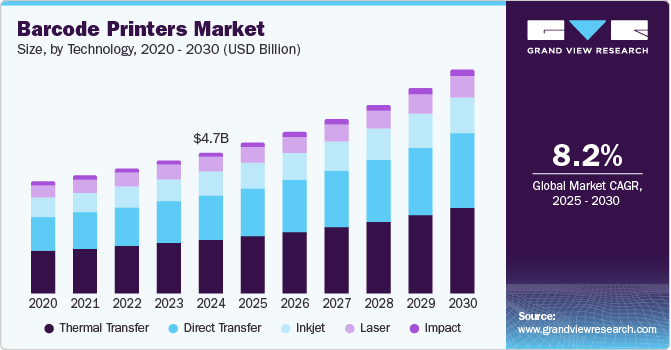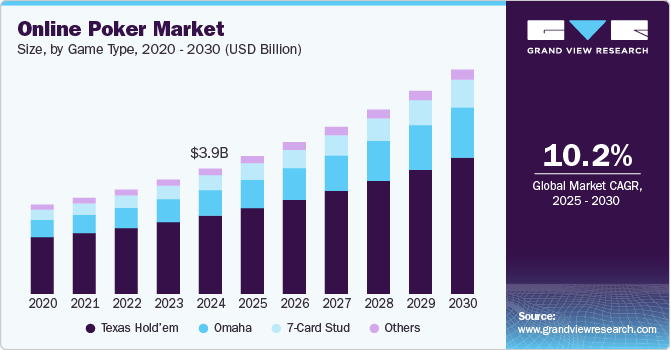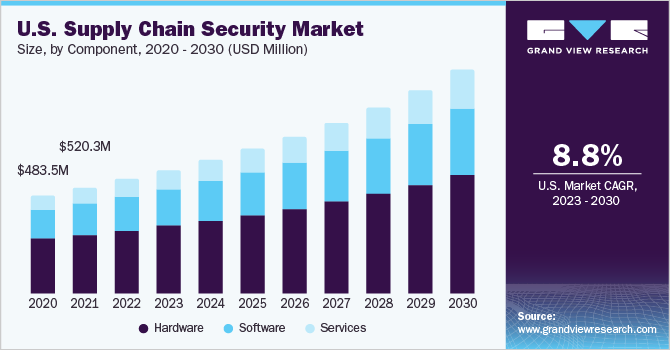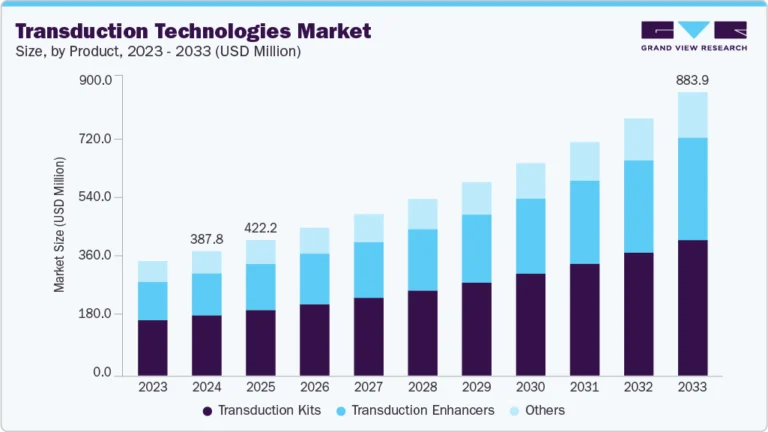Barcode Printers Market Size, Share & Trends Analysis grow at a CAGR of 8.2% from 2025 to 2030

The global barcode printers market size was estimated at USD 4,743.62 million in 2024 and is projected to grow at a CAGR of 8.2% from 2025 to 2030. The barcode printers market is projected to be driven by the rising demand for industrial printers across various industrial sectors. The growing adoption of barcode printers streamlining logistics operations is driving the growth of the market. While barcode printers provide an efficient way to monitor products during their movement along the supply chain, they are also helping in storing IoT numbers and serial numbers to handle the information while the product moves through different channels, thereby encouraging the adoption of barcode printers.
Request a free sample copy or view report summary: https://www.grandviewresearch.com/industry-analysis/barcode-printers-market/request/rs1
Barcode printers are also called specialty printers, which print barcode tags, receipts, and labels to be directly printed on or attached to physical objects. They are generally used to label cartons and receipts; and label retail, medical, and food items with the European Article Numbers (EANs) or Universal Product Codes (UPCs) before shipment. Moreover, increased adoption of radio frequency identification (RFID), which extends numerous advantages over barcodes, is expected to hinder the growth of the industry.
Aggressive investments by the government to encourage the industry incumbents to adopt the latest technologies, including barcode technology, bode well for the growth of the market. Barcode technology is increasingly being used for robotics, which means the continued implementation of robots across various industries and industry verticals translates into a growing demand for barcode printers. For instance, as per the statistics provided by the International Federation of Robotics (FIR), almost 21,700 industrial robots have been deployed across the industrial sector in the UK.
Several manufacturing entities are adopting modern technologies to rake in various benefits, such as simplified workflows, reduced prices, and increased quality assurance, thereby driving the adoption of barcode printers across the globe. Market players are responding to the situation by introducing innovative solutions in line with the evolving demands from the incumbents of various end-use industries and industry verticals. Moreover, the growing demand for packaged food in countries, such as China and India, is particularly expected to fuel the demand for barcode printers over the forecast period.
For instance the packaged food business in India is projected to exceed USD 70 billion in next 5-10 years according to the statistics published by India Brand Equity Foundation, making it the world’s one of the top processed food market which is further expected to increase the demand of barcode technology in developing economies such as India which is opportunistic for the market.
COVID-19 Impact Analysis
The outbreak of the COVID-19 pandemic took a severe toll on the global economy. However, it played a decisive role in driving the growth of the barcode printers market. While the launch and distribution of several products had to be deferred owing to the lockdowns and restrictions on the movement of people and goods forced owing to stop the spread of coronavirus, the installation of barcode systems gained noticeable traction in the manufacturing industry, where barcodes were installed to maintain social distancing without compromising the efficiency of the inventory management. Incumbents of the retail and e-commerce industries also adopted barcode printers aggressively to cater to the unabated growth of e-commerce sales in the wake of the lockdowns and restrictions on the movement of people.
Given the outbreak of the pandemic, several companies had to confront challenges, such as new safety requirements, unpredictable production volumes, and lower operational headcount. These companies went on to deploy barcodes to maintain the production of essential products and support the supply chain. As such, several manufacturers reevaluated their labeling functions to eliminate any human interference. Benefits, such as scalability, accuracy, automation, efficiency, and security, among others, associated with barcode technology encouraged these manufacturers to adopt barcode printers. Incumbents of the pharmaceutical & healthcare industry particularly adopted barcode printers following the outbreak of the COVID-19 pandemic to ensure that the efficiency of the production of certain medicines and drugs is not compromised.






